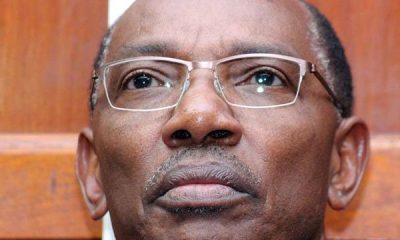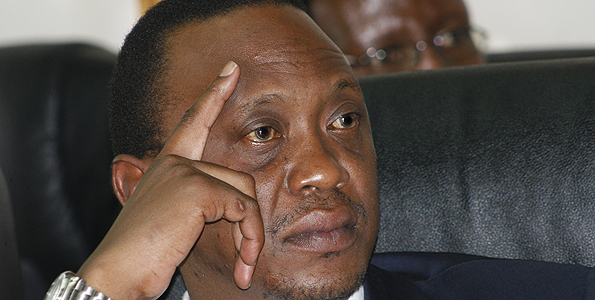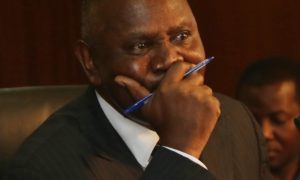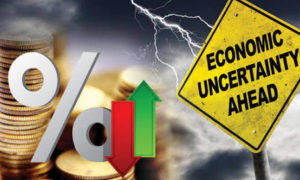Public debt has been an issue of public discourse for centuries. The debate is not about to end anytime soon. With developing countries investing much more resources in public infrastructure, education and other social amenities, public debt is expected to become even a bigger point of discussion moving forward. Just before the March 4, 2013, General elections, Kenya for the first time, held a presidential debate. Uganda followed suit earlier on this year. From those debates, it is evident we are yet to start discussing ideas in our presidential debates. My guess, however, is that going forward, these discussions are going to tackle key issues affecting these emerging market economies, key among them the issue of Public debt.
To start us off, let us try to understand some key terms. Debt refers to a contractual obligation in which a party uses the counterparty’s money or any other valuable resource with the view of repaying it at a later date, with interest. People have been borrowing since time immemorial, and they are not about to stop anytime soon. As long as resources for satisfying human needs and wants are limited, we shall always consume something we do not currently own with intent to repay at a later date. Just like individuals, body corporate and governments too, borrow. Public debt is what a government owes to its lenders. Government/ Sovereign debt can be used synonymously with public debt. Public debt can either be domestic or foreign. The former involves borrowing from within a country’s borders and among its citizens while the latter involves borrowing from outside the country’s borders. It could be a loan from foreign nationals, foreign governments or even international financial institutions. Ordinarily, domestic debt is denominated in the local currency while foreign debt is likely to be denominated in a foreign currency. External debt, on the other hand, is the amount of money owed to foreign investors by both the government as well as the private sector.
Since the year 2013, Kenya’s public debt has been on an upward spiral. According to Keynesian Economics, there are two possible scenarios that would put a country’s debt on an upward trajectory; War and recession. Since war is unanticipated, it is usually not planned for adequately in the budget, and therefore in the event of war breaking out, the country is likely to start borrowing to fund the cost of the war. In a recession, the economy has slumped. Jobs are scarce, and demand for products within the economy dwindles. This reduces tax revenue that the government had anticipated and corporate profits plunge, leading to lower corporate taxes being availed to the government. In such a case, the government will operate on a budget deficit, which is, in fact, public debt. For the last four years, Kenya has neither had a war nor a recession. In fact, the Kenyan economy has grown enormously over the period, as H.E the president has persistently said.
Key Facts and Figures
As at 2013, Kenya’s debt ceiling was Ksh. 800 billion. That same year, Parliament in its wisdom or lack thereof raised this ceiling by 500 basis points. We ended the year with a debt ceiling of Ksh. 1.2 Trillion. By the end of 2014, Parliament had more than doubled our debt ceiling. It now stood at Ksh. 2.5 Trillion.This figure was higher than our budget for the financial year 2014/2015 which stood at Ksh. 1.7 trillion. Kenya Debt to GDP ratio has grown from below 30% in 2012 to currently stand at 49.7%, 4.97 points above the treasury’s benchmark.
Is Debt Bad?
In life, nothing is bad. Similarly, nothing is good in absolute terms. What matters is a person’s perspective. In the corporate world, most capital projects are undertaken through use of debts. Most individuals develop themselves by using debt. The government too can make enormous economic progress through the use of debt. In the corporate world, you will rarely find a company that operates on 100% equity. In fact, theoretically, the most valuable firm would be the one that is 100% leveraged. This is because, interest expense as a cost of capital, is a member of an exclusive club called “allowable tax deductions” To illustrate, let’s assume we have Firms A and B. A’s capital structure is 100% Equity while B’s capital structure is 100% debt. If these two companies make the same earnings before interest and tax, firm B will end up paying the lesser tax. Equity, as a cost of capital, is expensive. In practice, however, strong B does not exist. And if it did, it would have a very high risk compared to A. What companies therefore do, is to find a balanced mix between equity and debt. They get a debt that will enable them to enjoy tax benefits while not unnecessarily raising their risk profile. Finding the right balance is what governments should look at while borrowing.
Measuring a country’s public debt
There are various ways that can be used to judge whether a country’s debt is healthy or moving in the wrong direction. This article will attempt to look at Kenya’s sovereign debt using two approaches. The first method, which is preferred by most researchers, is to measure debt as a percentage of GDP. There is no rule of the thumb here. However, the world bank looks at it from two angles; developed economies and emerging market economies. According to the world bank, an extended debt to GDP ratio of above 77% drags economic growth. In fact, it states that for every additional point above the 77% mark, the country loses 1.7% in economic growth. For emerging market economies such as Kenya, the ratio should not exceed 64%. Any figure above that slows economic growth by 2% each year. As a matter of policy, the Kenyan treasury has set its target Debt: GDP ratio as 45%. This is 19 percentage points lower than what the World Bank considers to be the benchmark. To this, end one must appreciate the government’s proactiveness. 19 percentage points is a field, wide enough to play all manner of games.
The second approach that can be used to measure a country’s debt is to look at it about Government revenues. This measure gives you a rough figure of how long it would take for the government to pay its debts if it were to use its ordinary revenue to pay for its debts. The current debt for our country stands at Ksh. 3.2 trillion. The government, on average generates Ksh. 100 billion every month. If we were to use our tax revenues to pay our debts exclusively, it would take us 32 months only! This is, of course, wishful thinking.
Is Kenya headed in the right direction?
There is no simple answer to this question. As alluded to earlier, it is evident we cannot explain our growing debt using Keynesian Economics. However, in a growing economy, the following variables are expected to be on an upward spiral as well. They include population, revenues, expenditure among others. To cater for the increasing need to provide service to the growing public, the government will need to dig deeper into its pocket. At this point, debt is the only option. Unlike in private sector budgeting where expenditure is based on revenue, in public financial management, revenue is based on expenditure. The government comes up with an expenditure plan, before creating revenues. This is why most governments operate deficit budgets.
It is tough to answer the above question. The answer depends on who you ask. I know of a particular person who when asked about our high Debt: GDP, answers by stating that the USA’S Debt: GDP is at 106%.
“This is more than double our own; we should not worry.” He concludes.
France is at 116%, and Japan is at 228%. Bahama’s at only 6%. So if indeed Debt: GDP meant much, Bahama’s would be the most financially stable country in the world. This was as at 2015. Greece closed the year 2015 at 188%. We all know where Greece is, economically speaking.
The above argument is simplistic. It does not take into consideration the individual components of that debt.
Public debt is composed of domestic debt and foreign debt. A large chunk of the US debts are owed to its citizen, and even those owed to foreigners are mostly dollar-denominated thereby eliminating the foreign exchange risk. If bad comes to worse, the FED can just print more dollars to repay its debts. Conversely, as at August 2015, 51.9% of our public debt was external. The risk associated with the foreign debt is that it is exposed to foreign exchange fluctuations, meaning if the shilling were to fall, we would spend more money to pay the debt than we had anticipated. Of course, the government can still hedge against this exposure through the use of derivatives, such as interest rate swaps. However, such derivatives also come at a cost. Japan has the same case as the USA, most of its debts are owed to its own citizens. So, our Debt to GDP ratio should not blind us.
In conclusion, it is not easy to determine if our public debt is sustainable or not, however, if you try to find ou the answer, here is my advice: Borrowing for the purpose of incurring recurrent expenditure is financial illiteracy unless you are in a financial crisis. Secondly, borrowing to loot, in the name of infrastructure development, and borrowing to invest in white elephants like the SGR, is not sustainable.
Finally, it is Adam Smith who once said,
“What can be added to the happiness of a man who is in health, out of debt, and has a clear conscience?”
The writer writes to inform.
Follow on Twitter: @pcmakokha
Facebook: PC Makokha
Disclaimer: This article expresses the author’s opinion only. The views and opinions expressed here do not necessarily represent those of Kenya Insights or its Editors. We welcome opinion and views on topical issues. Email:[email protected]
www.pcmakokhasays.wordpress.com.
Kenya Insights allows guest blogging, if you want to be published on Kenya’s most authoritative and accurate blog, have an expose, news TIPS, story angles, human interest stories, drop us an email on [email protected] or via Telegram

 Investigations1 week ago
Investigations1 week ago
 Investigations1 week ago
Investigations1 week ago
 Investigations1 week ago
Investigations1 week ago
 Investigations1 week ago
Investigations1 week ago
 Opinion2 weeks ago
Opinion2 weeks ago
 News2 weeks ago
News2 weeks ago
 Investigations1 week ago
Investigations1 week ago
 Investigations1 week ago
Investigations1 week ago




























